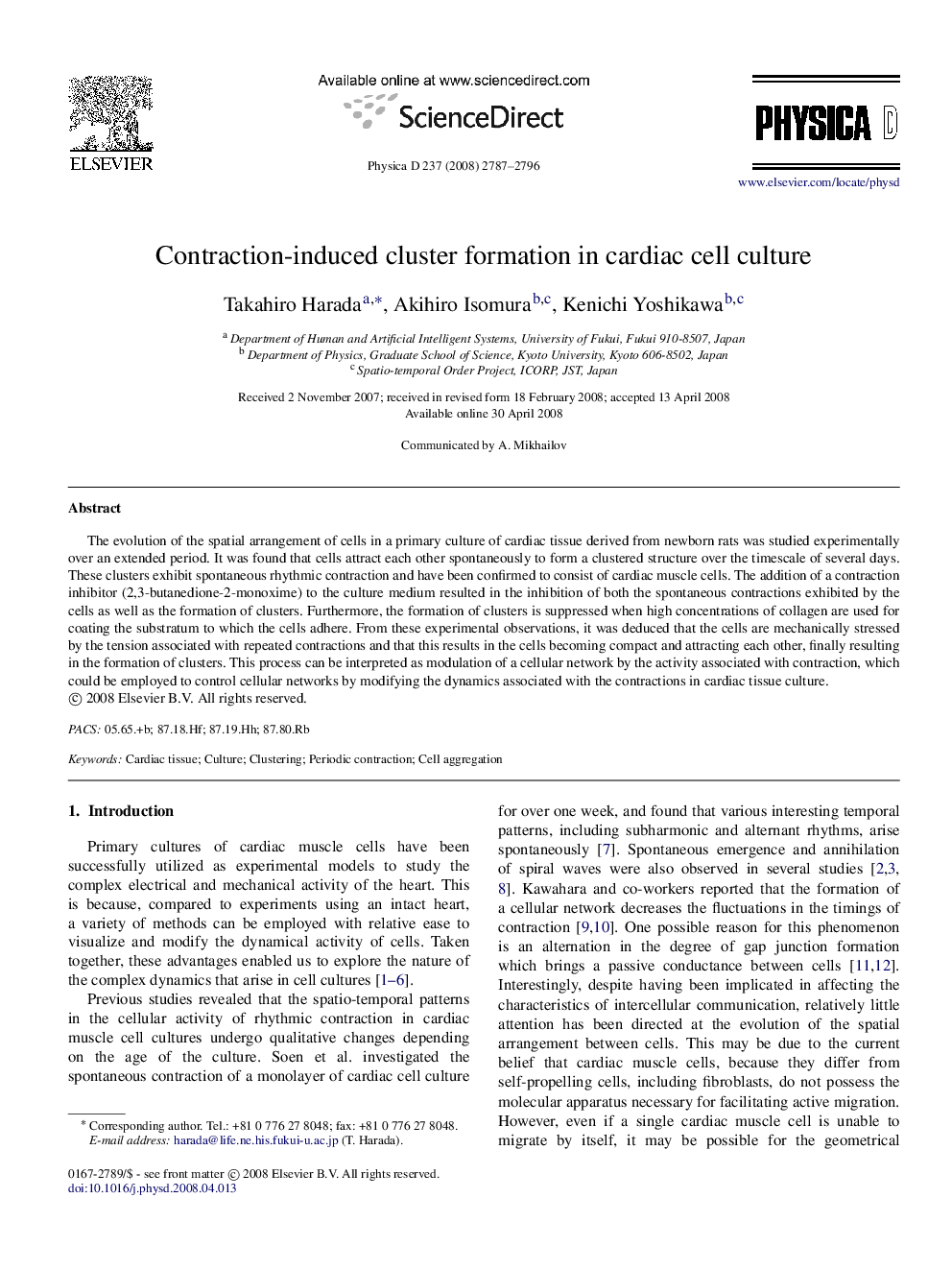| Article ID | Journal | Published Year | Pages | File Type |
|---|---|---|---|---|
| 1897119 | Physica D: Nonlinear Phenomena | 2008 | 10 Pages |
The evolution of the spatial arrangement of cells in a primary culture of cardiac tissue derived from newborn rats was studied experimentally over an extended period. It was found that cells attract each other spontaneously to form a clustered structure over the timescale of several days. These clusters exhibit spontaneous rhythmic contraction and have been confirmed to consist of cardiac muscle cells. The addition of a contraction inhibitor (2,3-butanedione-2-monoxime) to the culture medium resulted in the inhibition of both the spontaneous contractions exhibited by the cells as well as the formation of clusters. Furthermore, the formation of clusters is suppressed when high concentrations of collagen are used for coating the substratum to which the cells adhere. From these experimental observations, it was deduced that the cells are mechanically stressed by the tension associated with repeated contractions and that this results in the cells becoming compact and attracting each other, finally resulting in the formation of clusters. This process can be interpreted as modulation of a cellular network by the activity associated with contraction, which could be employed to control cellular networks by modifying the dynamics associated with the contractions in cardiac tissue culture.
